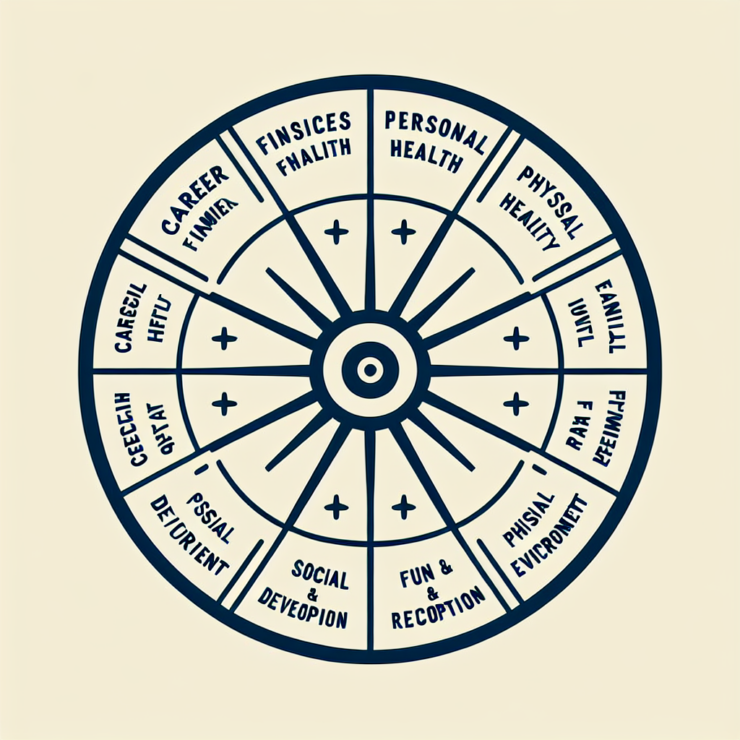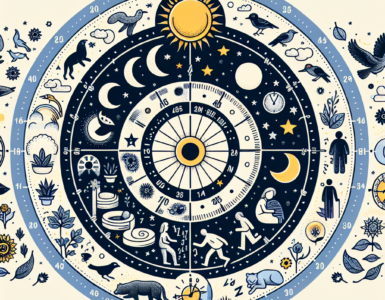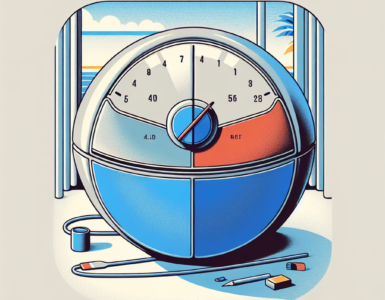Introduction to the Wheel of Life
The Wheel of Life is a renowned self-assessment tool that has been widely used in the field of personal development and coaching. It serves as a visual metaphor for creating balance and greater success in one’s life.
What is the Wheel of Life Template?
The wheel of life template is a circular diagram that is divided into sections or ‘spokes’, each representing a different aspect of life. Individuals use this template to reflect upon and rate their level of satisfaction in each area, thereby gaining insights into their overall life balance. It is an introspective tool that helps to highlight areas that are flourishing as well as those that may require more attention.
The Origins of the Wheel of Life in Coaching
The origins of the Wheel of Life can be traced back to the world of coaching, where it was developed as a simple yet powerful tool to help clients understand their current life situation at a glance. By providing a visual snapshot of their life, it allows individuals to identify strengths and weaknesses across various life domains and serves as a starting point for setting personal and professional development goals. The Wheel of Life continues to be a fundamental element in coaching practices around the globe, supporting individuals in their journey towards a more fulfilled and balanced life.
The Components of the Wheel of Life
The Wheel of Life serves as a visual representation that helps individuals assess their current life balance. This holistic self-assessment tool considers various facets of one’s life to provide comprehensive insights.
The Key Areas of Life
Typically, the Wheel of Life template is divided into several key areas that represent important aspects of an individual’s life. These areas are designed to cover a wide spectrum of personal and professional components that contribute to overall life satisfaction and fulfillment.
Common areas of life included in the Wheel of Life are:
- Career or Business
- Finances
- Health
- Family and Friends
- Romance or Significant Other
- Personal Growth
- Fun and Recreation
- Physical Environment
Each of these areas plays a crucial role in one’s overall well-being and happiness. The Wheel of Life encourages individuals to reflect upon each sector, thereby gaining a deeper understanding of their personal journey and areas where they may seek improvement.
Understanding the Wheel’s Sectors
The Wheel of Life is divided into sectors, also known as ‘spokes’, which correspond to the key areas of life. Each sector is rated by the individual, typically on a scale from 1 to 10, with 1 representing dissatisfaction and 10 signifying complete satisfaction. This rating process helps to create a visual depiction of one’s current life balance.
| Key Area of Life | Satisfaction Rating (1-10) |
|---|---|
| Career or Business | |
| Finances | |
| Health | |
| Family and Friends | |
| Romance or Significant Other | |
| Personal Growth | |
| Fun and Recreation | |
| Physical Environment |
Upon completing the ratings for each sector, one can connect the dots to form a circular shape that visually represents their Wheel of Life. This illustration serves as a diagnostic tool, highlighting areas that are thriving as well as those that may require more attention and effort. By analyzing the shape and balance of the wheel, individuals can identify imbalances and work towards creating a more harmonious life.
Preparing to Use the Wheel of Life Template
Before delving into the Wheel of Life, it is essential to prepare both mentally and practically to ensure that the exercise is as effective and insightful as possible. Proper preparation can set the stage for a transformative experience that promotes self-awareness and personal growth.
Setting the Right Mindset
Approaching the Wheel of Life template requires an open and honest mindset. Individuals should be prepared to engage in a candid assessment of their current life circumstances. This involves acknowledging both strengths and areas needing improvement without self-judgment. The mindset one adopts should be one of curiosity and a willingness to embrace change. Acceptance that the process is a personal journey toward self-improvement rather than a critique is crucial.
To foster the right mindset, individuals can begin by:
- Acknowledging their readiness for self-discovery
- Embracing vulnerability as a strength
- Committing to honesty throughout the process
- Viewing the exercise as a starting point for development
Allocating Time for Self-Reflection
Self-reflection is a vital component of the Wheel of Life exercise. Allocating sufficient time in a comfortable and distraction-free environment is important to deeply consider each life area. Individuals should choose a time and place where they can reflect without interruption, allowing for a thorough and thoughtful assessment.
The recommended duration for self-reflection might vary from person to person, but here is a suggested timetable for getting started:
| Activity | Suggested Duration |
|---|---|
| Introduction to the Wheel of Life Template | 10 minutes |
| Reading and Understanding Instructions | 20 minutes |
| Reflecting on Each Life Area | 5-10 minutes per area |
| Completing the Assessment | 20-30 minutes |
| Reviewing and Processing Results | 15-20 minutes |
By preparing mentally and physically for the Wheel of Life exercise, individuals can maximize the benefits of this powerful self-assessment tool. With the right mindset and dedicated time for self-reflection, one can begin to accurately gauge the balance of their life’s sectors and take the first steps toward holistic personal development.
Completing the Wheel of Life Assessment
The Wheel of Life assessment is a powerful exercise designed to give individuals a visual overview of their current life balance. Completing this assessment involves rating each aspect of one’s life and identifying areas where there may be an imbalance.
Rating Each Aspect of Your Life
To begin the assessment, one must rate each area of life on a scale from 0 to 10, with 0 representing complete dissatisfaction and 10 signifying total satisfaction. The aspects typically include career, finances, health, family and friends, romance, personal growth, fun and recreation, and physical environment.
Individuals should rate each sector honestly based on their current level of satisfaction. It’s essential to avoid the influence of external expectations and focus on personal feelings and experiences.
| Life Aspect | Rating (0-10) |
|---|---|
| Career | |
| Finances | |
| Health | |
| Family and Friends | |
| Romance | |
| Personal Growth | |
| Fun and Recreation | |
| Physical Environment |
Identifying Areas of Imbalance
After rating each aspect, individuals will often notice that some areas score higher than others, indicating an imbalance. It is crucial to observe these disparities as they can highlight the sectors that may require more attention and effort.
To identify these areas of imbalance, one should look at the discrepancies between the different life aspects. A balanced wheel does not necessarily mean achieving a perfect score in every area, but rather a harmonious distribution of satisfaction levels that reflects the individual’s priorities and values.
By identifying these imbalances, individuals can set the stage for targeted personal development, leading to a more balanced and fulfilling life.
Analyzing Your Wheel of Life Results
After completing the wheel of life assessment, individuals will have a visual representation of various aspects of their lives. Analyzing this representation is crucial for understanding where one stands and what areas require attention.
Interpreting the Wheel’s Visual Representation
The wheel of life template typically divides life into several sectors, each representing a key area, such as career, finances, health, relationships, personal growth, and recreation. Individuals rate their satisfaction in each area, and these ratings are then plotted on the wheel, creating a visual representation of one’s current life balance.
To interpret the wheel’s visual representation, one must examine the shape that emerges. A perfectly round wheel suggests balance, while a jagged or uneven wheel indicates areas of life that are lacking attention or fulfillment.
Here is an example of how numerical ratings might be represented in the wheel:
| Life Area | Rating (1-10) |
|---|---|
| Career | 7 |
| Finances | 5 |
| Health | 8 |
| Relationships | 6 |
| Personal Growth | 9 |
| Recreation | 4 |
By plotting these ratings on the wheel, individuals can visually assess which sectors are thriving and which are in need of improvement.
The Importance of Balance Across Sectors
Achieving balance across the different sectors of the wheel of life is fundamental to overall well-being and satisfaction. An imbalance might not only affect the specific area but can also spill over into other aspects of life. For instance, excessive focus on career might lead to neglect in personal relationships or health, creating a ripple effect that diminishes overall life satisfaction.
It is important to use the wheel of life as a tool to strive for balance, rather than perfection. The goal is to identify the most pronounced imbalances and work towards enhancing these areas, while maintaining or slightly improving the sectors that are already satisfactory.
The wheel of life template serves as a guide for individuals to visualize which areas of life may need more attention and to set realistic goals for improvement. Regular reassessment can help individuals stay on track with their personal development goals and respond to life’s ever-changing circumstances.
Setting Goals with the Wheel of Life
The Wheel of Life is a powerful self-assessment tool that can help individuals identify areas in their lives that need attention or improvement. Once the assessment phase is completed, the next crucial step is setting goals to enhance one’s personal development.
Prioritizing Areas for Improvement
After completing the Wheel of Life assessment, it is evident that some life areas may score lower than others, indicating a need for improvement. To effectively prioritize these areas, individuals should consider not only the scores but also the overall impact on their life satisfaction and personal fulfillment.
One should start by listing the life areas in order of their current satisfaction levels, from the lowest to the highest. This visual prioritization can help in recognizing which sectors require immediate attention.
| Life Area | Satisfaction Level (1-10) |
|---|---|
| Career | 4 |
| Finances | 7 |
| Health | 5 |
| Family and Friends | 6 |
| Romance | 3 |
| Personal Growth | 5 |
| Fun and Recreation | 8 |
| Physical Environment | 6 |
Next, individuals should reflect on how changes in these areas could influence their overall well-being. It is pivotal to address areas that have a substantial impact on one’s quality of life first.
Creating Actionable Plans
Once the areas for improvement are identified and prioritized, the next step is to create actionable plans for each area. This involves setting specific, measurable, achievable, relevant, and time-bound (SMART) goals.
For instance, if one’s career satisfaction level is low, they may set the goal to seek a new position or gain a new skill within the next six months. It is vital to break down this goal into smaller, manageable steps, such as updating the resume, networking with industry professionals, or enrolling in a course.
An example of a SMART goal for the career sector could look like this:
Goal
- Gain a new skill in my field
Specific
- Enroll in an online certification course
Measurable
- Complete the course and earn the certificate
Achievable
- Course is within budget and fits my schedule
Relevant
- Enhances my qualifications and career prospects
Time-bound
- Complete within the next 3 months
For each goal set, one should also anticipate potential challenges and devise strategies to overcome them. This proactive approach ensures that the individual remains on track even when faced with obstacles.
By prioritizing areas for improvement and creating detailed, actionable plans, individuals can utilize the Wheel of Life template not just as a diagnostic tool, but as a roadmap for personal growth and life balance. Regularly revisiting and adjusting these goals helps maintain progress and adapt to any changes in one’s life circumstances.
Using the Wheel of Life for Ongoing Development
The Wheel of Life is not just a one-time assessment tool; it is designed for continuous personal growth and development. By engaging in regular check-ins and being adaptable to life changes, individuals can maintain a balanced life that aligns with their evolving goals and circumstances.
Regular Check-Ins and Updates
Regular check-ins are essential to monitor progress and ensure that actions are effectively addressing the areas identified for improvement. These check-ins should be scheduled at consistent intervals—monthly, quarterly, or annually—to reflect on changes and update the self-assessment accordingly.
During each check-in, individuals should:
- Rate each life area again to track progress or identify any new areas of concern.
- Reflect on the effectiveness of the strategies implemented since the last assessment.
- Update goals and action plans to align with current priorities and life situations.
| Check-In Interval | Purpose |
|---|---|
| Monthly | Short-term progress tracking and quick adjustments |
| Quarterly | Reviewing and refining strategies and goals |
| Annually | Comprehensive reflection and long-term planning |
Adapting to Life Changes
Life is dynamic, and circumstances can change rapidly. The Wheel of Life template is flexible enough to accommodate these changes. When significant life events occur—such as career changes, personal relationships, or health issues—it’s crucial to reassess the wheel to ensure that it accurately reflects the current state of life.
Adaptation involves:
- Recognizing the impact of life changes on various life areas.
- Revisiting and potentially redefining what balance means in the context of new circumstances.
- Modifying goals and action plans to be responsive to these changes and to support continued personal growth.
Incorporating the Wheel of Life into one’s regular routine encourages proactive rather than reactive living. It empowers individuals to take charge of their development, fostering a resilient approach to life’s inevitable changes and challenges. Through dedication to this reflective practice, the full potential of the Wheel of Life as a transformative tool is truly unlocked.
Common Misconceptions and Pitfalls
When utilizing the Wheel of Life as a self-assessment tool, individuals often encounter certain misconceptions and pitfalls that can impact the effectiveness of this exercise. Recognizing these common errors and understanding how to avoid them can help in achieving a more balanced and fulfilling life.
Unrealistic Expectations
One of the primary misconceptions when using the Wheel of Life template is setting unrealistic expectations for oneself. Individuals may believe that achieving perfect scores in all areas of life is necessary for happiness and success. However, it is critical to acknowledge that life is dynamic, and complete balance at all times is not feasible.
| Life Area | Expected Score (unrealistic) | More Realistic Score |
|---|---|---|
| Career | 10 | 7-8 |
| Relationships | 10 | 7-8 |
| Personal Growth | 10 | 7-8 |
| Health | 10 | 7-8 |
It is important to set achievable goals and understand that fluctuations in different areas of life are normal. A more practical approach is to strive for satisfaction and progress rather than perfection. This mindset promotes continuous growth and prevents feelings of inadequacy or failure.
Overemphasis on Certain Life Areas
Another pitfall is the overemphasis on certain life areas, often at the expense of others. This can lead to an unbalanced wheel, with some sectors scoring significantly higher than others. For instance, one might focus heavily on career advancement while neglecting personal relationships or health.
| Life Area | Score (with overemphasis) | Score (more balanced) |
|---|---|---|
| Career | 9 | 7 |
| Relationships | 3 | 6 |
| Personal Growth | 4 | 6 |
| Health | 4 | 6 |
Prioritizing certain sectors may seem beneficial in the short term, but long-term neglect of other areas can result in a lack of overall fulfillment. It’s essential to recognize the value of each sector and aim for a more holistic approach to personal development. Balancing time and energy across various aspects of life can lead to greater well-being.
By understanding these common misconceptions and pitfalls, individuals can more effectively use the Wheel of Life template to guide their personal growth journey. It’s about developing a realistic perspective and recognizing the importance of balance and harmony across all sectors of life.











